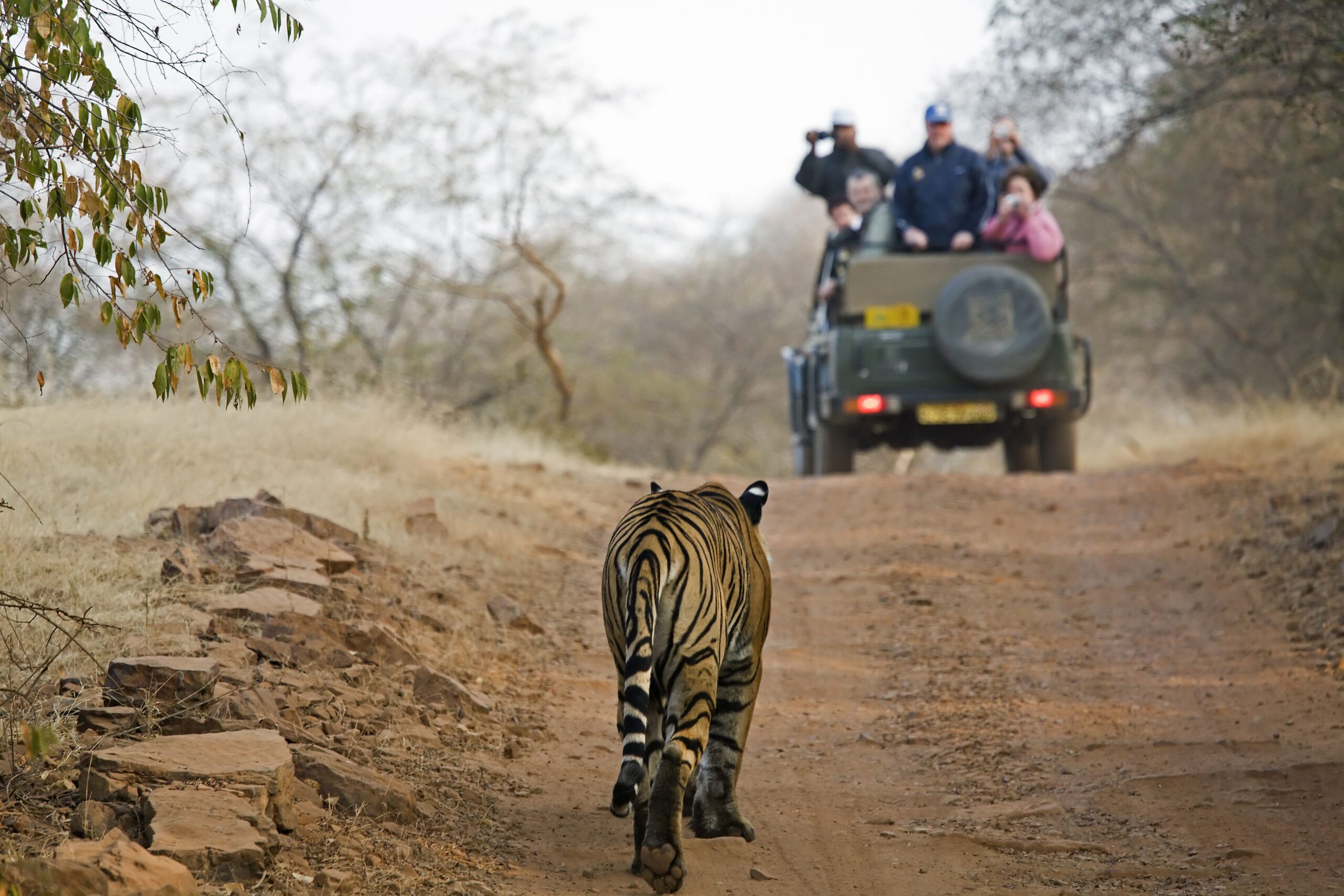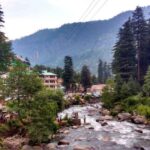National Park Jim Corbett
The first national park in India deserves to be at the top of our list. In 1936, it was established primarily to conserve the Bengal tiger in Uttarakhand’s terai region. Its surrounding lush hills, dense forest cover, and broad, open meadows are great big cat country. Furthermore, the park is home to approximately 650 different bird species, so bring your camera. Tourists can visit all five zones of Corbett National Park: Dikhala, Bijrani, Jhirna, Durgadevi, and Dhela.
National Park of Gir Forest
This has to be India’s most unique protected area because it is the only place in the world where the Asiatic lion, the true king of the forest, can be found. It is a huge scrub and savannah woodland, the kind that lions inhabit in Africa, located in the Gujarat districts of Gir Somnath, Junagadh, and Amreli. According to estimates, the area is home to over 2,000 species of wildlife, so nature enthusiasts will be in for a real treat.
National Park of Ranthambore
Ranthambore National Park, located in Rajasthan’s Sawai Madhopur region, is one of the best spots in India to watch tigers. Machhli, the world’s most renowned tiger, thrived here; she has appeared in numerous National Geographic and Discovery Channel documentaries. Furthermore, Ranthambore Fort is located within the national park, lending historical value to the location. Apart from witnessing the numerous constructions within the fort, you may also be able to see tigers, many of whom either live or visit here regularly.
National Park of Bandhavgarh
This is another national park with a fort that is one of the most popular tourist spots in Central India. According to accounts, there are eight of these large cats per square kilometer here, making it one of the greatest sites in India to watch them. Elephant and jeep safaris are offered in the morning and evening through the protected territory’s four tourism zones: Magadhi, Tala, Panpatha, and Khitauli. The vegetation is characteristic of the Deccan Plateau region, with dry deciduous forests interspersed with open grasslands.
National Park of Kaziranga
If any place is bestowed with the status of a UNESCO World Heritage Site, it is worth a visit. The honor is well deserved because Kaziranga is one of the last strongholds of the endangered one-horned rhino (the rhinos in Africa are two-horned) (the rhinos in Africa are two-horned). The dominating feature of this protected territory is the wide, open grasslands, known as doors in the local language. Apart from these iconic animals, the park is home to several other large mammals, including the Indian elephant; the wild water buffalo, easily distinguishable by its massive horns; and the gaur (Indian bison), which weighs 1,500 kg on average.
National Park Hemis
This national park, located high in the Himalayas, has limited vegetation due to its location in a freezing desert. It is a paradise for adventure seekers and enthusiastic trekkers, with an average elevation of more than 10,000 feet above sea level. Its biggest draw is the elusive snow leopard, which has the world’s greatest population here. It’s a great site to pitch a tent in any month, with snow-covered mountains and brilliant, starry night skies.
National Park of the Sundarbans
Another UNESCO World Heritage Site, this vast swamp forest is one of the only sites on the planet where tigers can swim in rivers as well as run on land. Unlike other national parks in India, this one is only accessible via boat, rather than on foot or in a jeep. With so many little Ganga distributaries winding their way through the mangrove jungle, you never know what natural treasure you’ll come across.
Tiger Reserve of Periyar
Periyar Tiger Reserve, arguably South India’s most famous national park, is named after the Periyar River, Kerala’s longest. The Western Ghats are synonymous with beautiful hills, walking paths, lakes, rivers, and rich wildlife. Aside from vehicle safaris, you might simply have a picnic on the beaches of Periyar Lake, on gently sloping slopes. The entire region is noted for its indigenous biodiversity, which has earned the Western Ghats a UNESCO World Heritage Site designation.
National Park of the Himalayas
The Great Himalayan National Park, a recent addition to the UNESCO World Heritage Site list, captures the spirit of the world’s tallest mountain range. Its elevation extends from roughly 5,000 feet to more than 19,500 feet, allowing visitors to see the whole diversity of Himalayan plants. Subtropical pine woods are found at the lowest elevations, followed by temperate coniferous forests dominated by deodars, spruces, and firs. Subalpine grasslands and meadows replace the conifers higher up.
National Park of Blackbuck
This national park in Gujarat was established to conserve the blackbuck, a species of deer. Another reason to visit this protected area is that it is one of the few spots in the country where you may view the Indian wolf (different from the Himalayan wolf). Unlike Corbett and Kaziranga, which have lush flora, this location has a large carpet of tall, golden grass with a few trees strewn about. This is one of the country’s lesser protected areas, but it doesn’t make it any less interesting.
Bangalore’s Bannerghatta Biological Park
Bannerghatta Biological Park in Bangalore is a delight for nature and wildlife enthusiasts, with its lush foliage and diverse species. The thrill of up-close encounters with Royal Bengal tigers, Indian wolves, barking deer, and other creatures draws many visitors to this national park. Bannerghatta is also home to over 100 bird species, owing to the abundance of trees that provide cool refuge to the avifauna. The park organizes elephant, jeep, and bus safaris for travelers who want to explore the area and see exotic animals up close. With many campsites dotting the borders of Bannerghatta, the park is also perfect for overnight camping.
Tamil Nadu’s Mudumalai National Park
Mudumalai National Park, located in the northwestern portion of the Nilgiri plateau, is one of the region’s most popular attractions. It is located at an elevation of approximately 1266 meters and is bordered by numerous kinds of wood and wildlife areas. The national park, which also serves as a tiger reserve, is home to approximately 100 tigers as well as several endangered species such as mammals, reptiles, amphibians, and birds. The national park can be explored on the back of an elephant or in a vehicle. A safari through the tropical evergreen and moist deciduous forests would be especially memorable. If you’re lucky, you might see some animals moving around freely, so keep your cameras handy.
Karnataka’s Kudremukh National Park
Kudremukh National Park, which is scenic and quiet, is one of the greatest destinations to visit for environment lovers and animal aficionados. The national park is located in Karnataka’s Chikmagalur district, at an elevation of 1894 meters above sea level. It is surrounded by stunning hills and lush foliage and is home to numerous endangered and indigenous flora and fauna species. This park’s highlights include leaping leopards, endangered lion-tailed macaques, and wild dogs. Kudremukh is also a birdwatcher’s paradise, with over 200 species of birds, including some rare and migratory species, to be found. Furthermore, the park has lovely hiking routes, milky white waterfalls, verdant plantations, and natural ponds.
Kerala’s Eravikulam National Park
Eravikulam National Park, located at an elevation of 2258 meters and surrounded by beautiful tea plantations, is one of Kerala’s most famous attractions. This park provides a natural habitat for the rare Nilgiri Tahr mountain goat. The park was originally intended to safeguard this endangered species. Another feature that distinguishes Eravikulam National Park is the presence of Neelakurinji flowers, which bloom just once every 12 years. The park is home to rare butterflies as well as 19 amphibian species. Aside from wildlife viewing, adventure seekers can enjoy walking and camping in pristine nature.
Uttarakhand’s Valley of Flowers National Park
Valley of Flowers, located in Uttarakhand’s Chamoli district, is one of the country’s most beautiful national parks. This national park is home to some rare and endangered wildlife species, as well as meadows of indigenous alpine flowers and shrubs. Snow leopards can also be seen here if you’re lucky. The hike from Govindghat to Valley of Flowers National Park is an entirely different experience. You may see mountain streams, gushing waterfalls, and uncommon flora and animals along the 40-kilometer path. The national park’s unparalleled beauty has won it a spot on the list of UNESCO World Heritage Sites.








